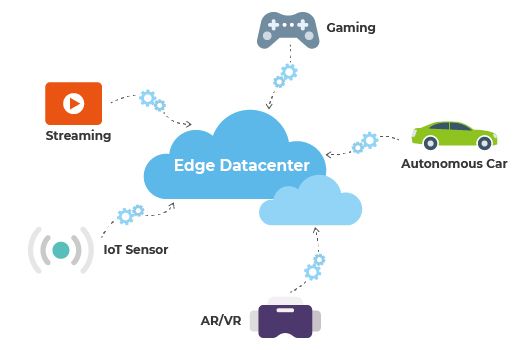
Ceph Storage for Multi-Access Edge Computing
MEC utilizes the 5G technology and deploys the edge datacenter close to the applications to increase the throughput and reduce the latency for accessing application data. The physical areas for public MEC deployment could be colocation at the base station, transition node, network aggregation point. In certain situations, cloud migrations are inhibited by residency or privacy constraints that prevent data from leaving the premises and strict compute latency requirements or the need for cloud infrastructure to connect directly to onsite equipment.
Private MEC integrates edge computing infrastructure with private networks deployed on or near the enterprise’s premises to address these challenges. Many applications also need mobile micro edge data centers to provide location resilienc
Benefits of Multi-Access Edge Computing (MEC)
- Providing new service & new revenues streams
- Able to do real-time analytics with lower latency
- Conserve network bandwidth and reduce the network congestion
- Reduce cloud data storage & its transport cost
- Strengthen security and compliance
- Improve availability of applications and its’ IT assets
The public and private MEC use virtualization infrastructure to provide compute, storage, and network resources for the MEC applications. Ceph software-defined storage plays a vital role in the open-source cloud-native infrastructures such as OpenStack and Kubernetes. According to the OpenStack and Kubernetes user survey reports, more than 50% of OpenStack and Kubernetes deployments use Ceph as their backend storage.
Advantages to use Ceph for MEC virtualization Infrastructure
- Ceph storage is highly available and scalable.
- Ceph can reheal data when a storage device or server fails. These reduce the operation cost of the MEC infrastructure.
- Ceph storage is unified storage that provides block, shared file system, and object storage. It fulfills the application’s various storage demands.
Ambedded Ceph Appliance solution for MEC
Ambedded focuses on providing robust and easy-to-use software-defined storage appliances powered by Ceph and Arm-based microserver technologies. Ambedded’s Ceph management software UVS Manager automates the day one deployment and day two storage management to reduce the operating cost. Ambedded tunes the Ceph to optimize the performance and stability of the Ceph cluster integrated with the purpose-built Arm microserver.
MEC edge data centers usually have limited space and electricity resources. Ambedded’s Ceph appliance has the following advantages that benefit the TCO and competitiveness of MEC solution.
Power Saving Solution on Edge Datacenter
Excluding the eight disk drive, every 1U server consumes only a hundred watts of power. It saves 70% of electricity and cooling costs compared to a regular x86 server
1.6x Higher OSD Density Comparing to Other Solutions
Due to the maximum power limit of each rack, Ambedded offers 1.6 times storage density compared to regular 2U x86 servers.
Dedicated Hardware Resource to Each OSD Stabilize Ceph Storage Performance Output
32 Arm-64 CPU cores are evenly used by eight OSD in a 1U appliance. This balances the Ceph cluster workload with a result of higher performance compared to a regular shared CPU architecture.
Smallest Failure Domain & Much Faster Recovery Time
Because of the microserver architecture design, Ambedded Minimizes the server node failure domain to a single storage device. This recovery time of a microserver failure is one-eighth of the regular storage server.





